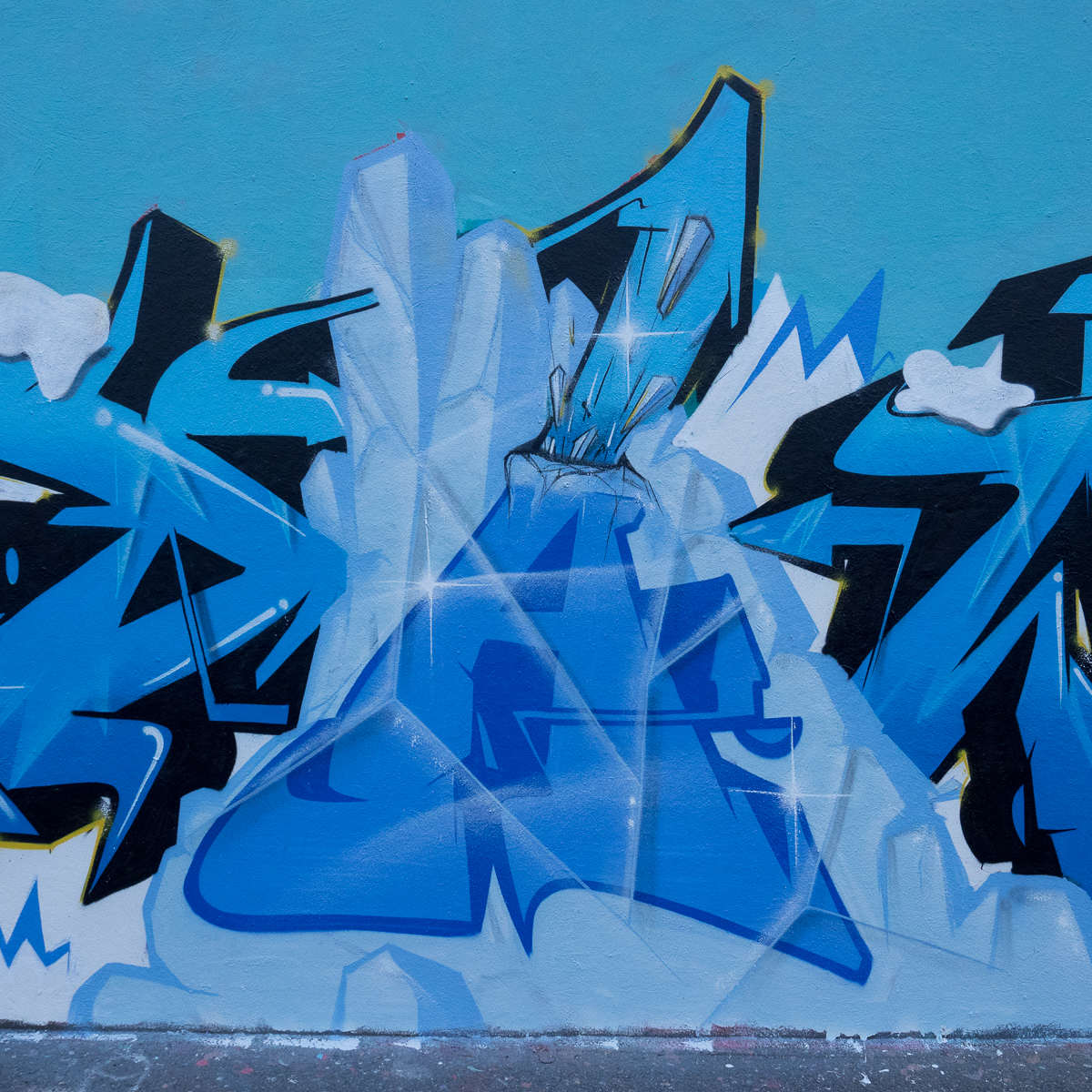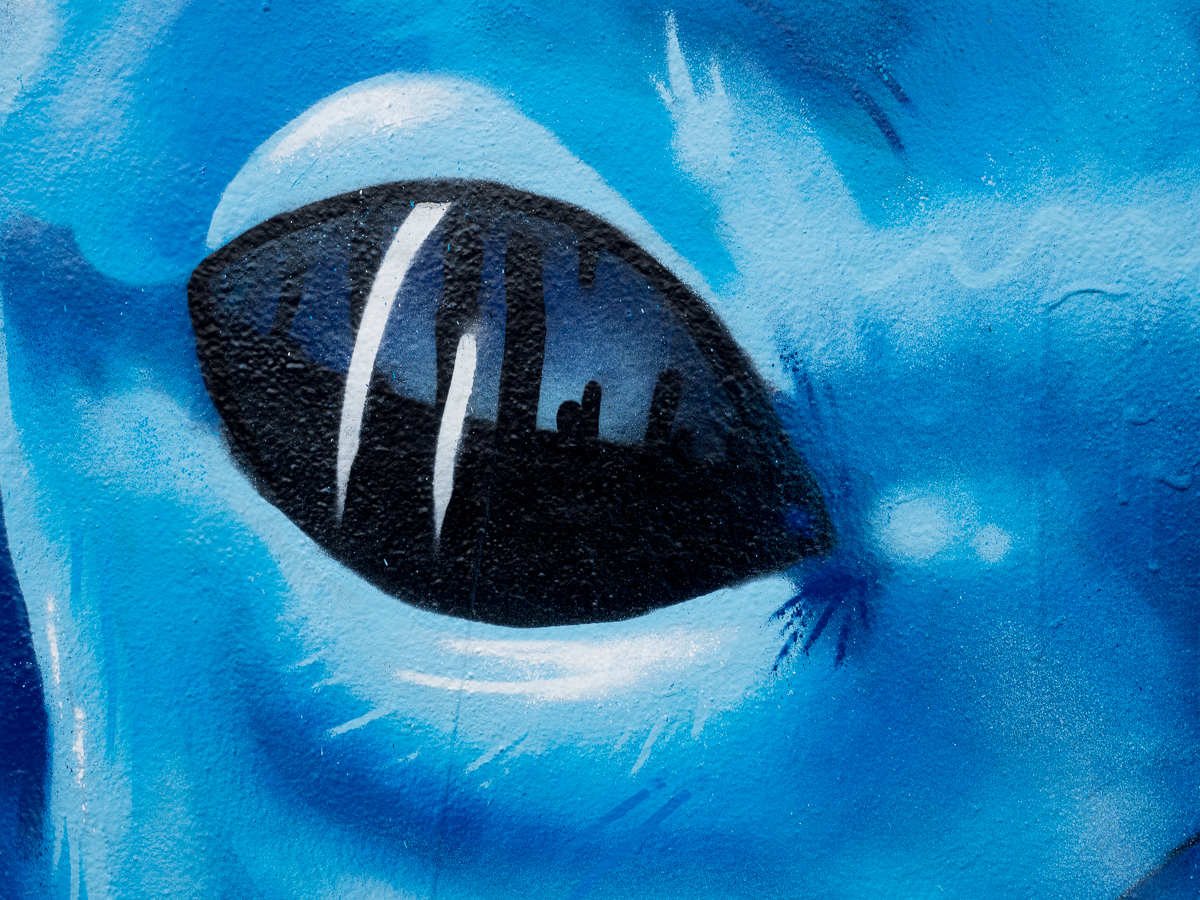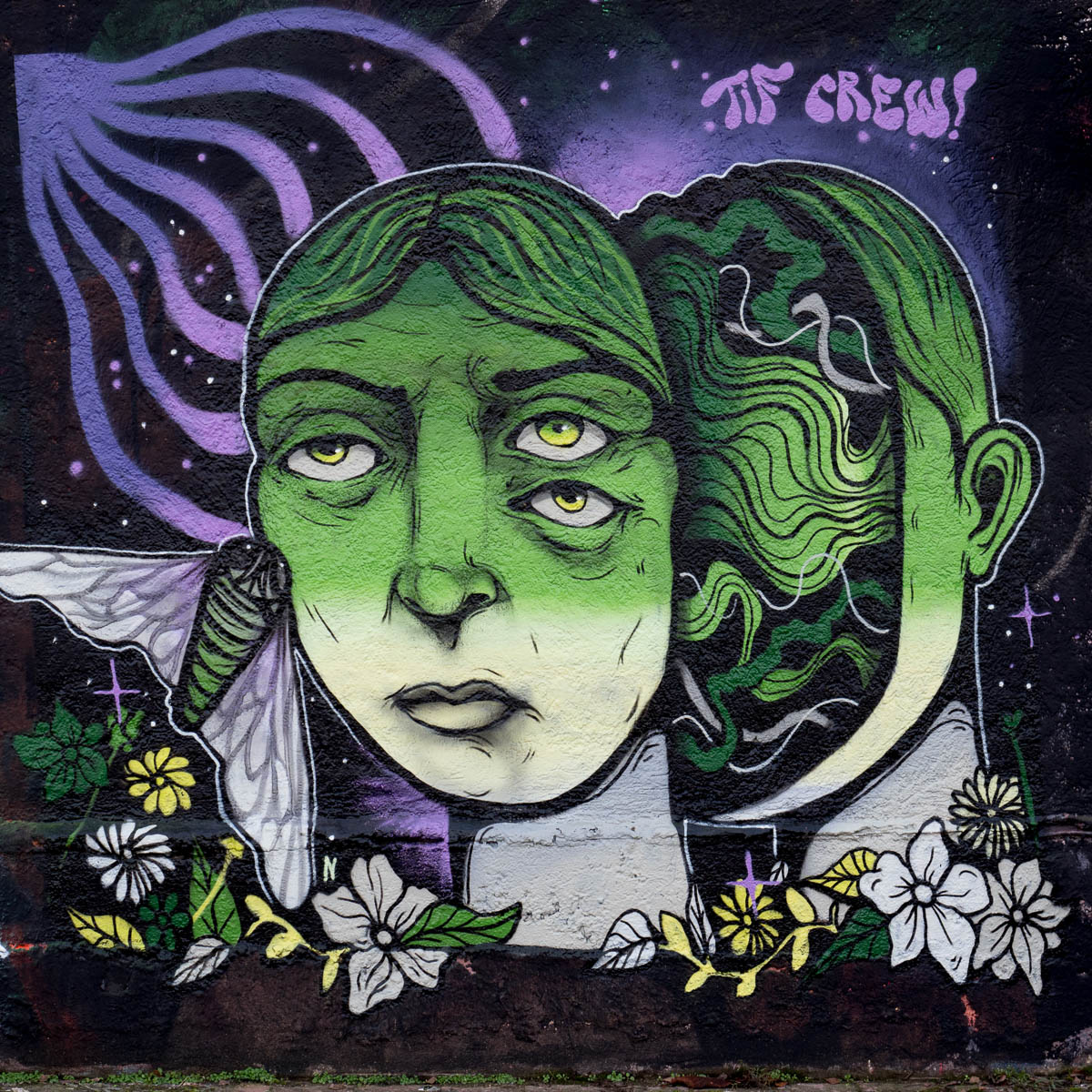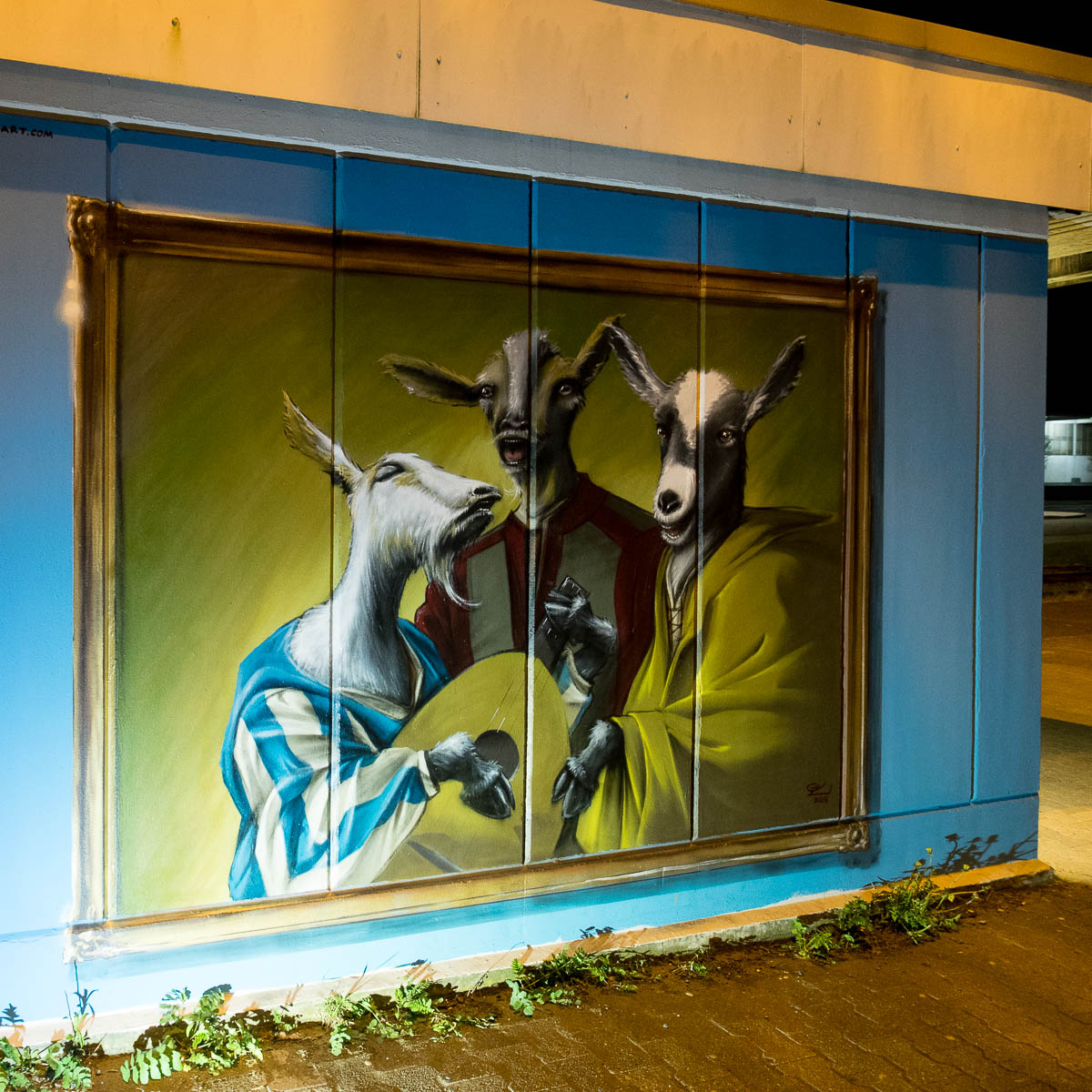Today we are going to introduce you to a terrific website that had a great impact on me and basically was together with some other important platforms and magazines an inspiring factor to start this Vagabundler project. For more than ten years now, the platform Dosenkunst by photographer Jörg Rudolph has been delivering fantastic graffiti material from the Rhine-Main area in Germany or from overseas, with awesome making-of reports, extensive background information and adventurous Urbex stories.

Travelling and exploring has always been a passion of Jörg Rudolph and on his trips he has continously collected numerous slide photographs. Through his youth culture work in Wiesbaden he encountered graffiti and streetart again and again. The works and especially the process of creation fascinated him increasingly and he began to photograph these motifs as well. A mix of overall documentation with his indiviual preferences like detail close ups or characters. Over the years thousands of photos have accumulated, it was time to present them to the world and other interested people and in July 2020 the website Dosenkunst went online!
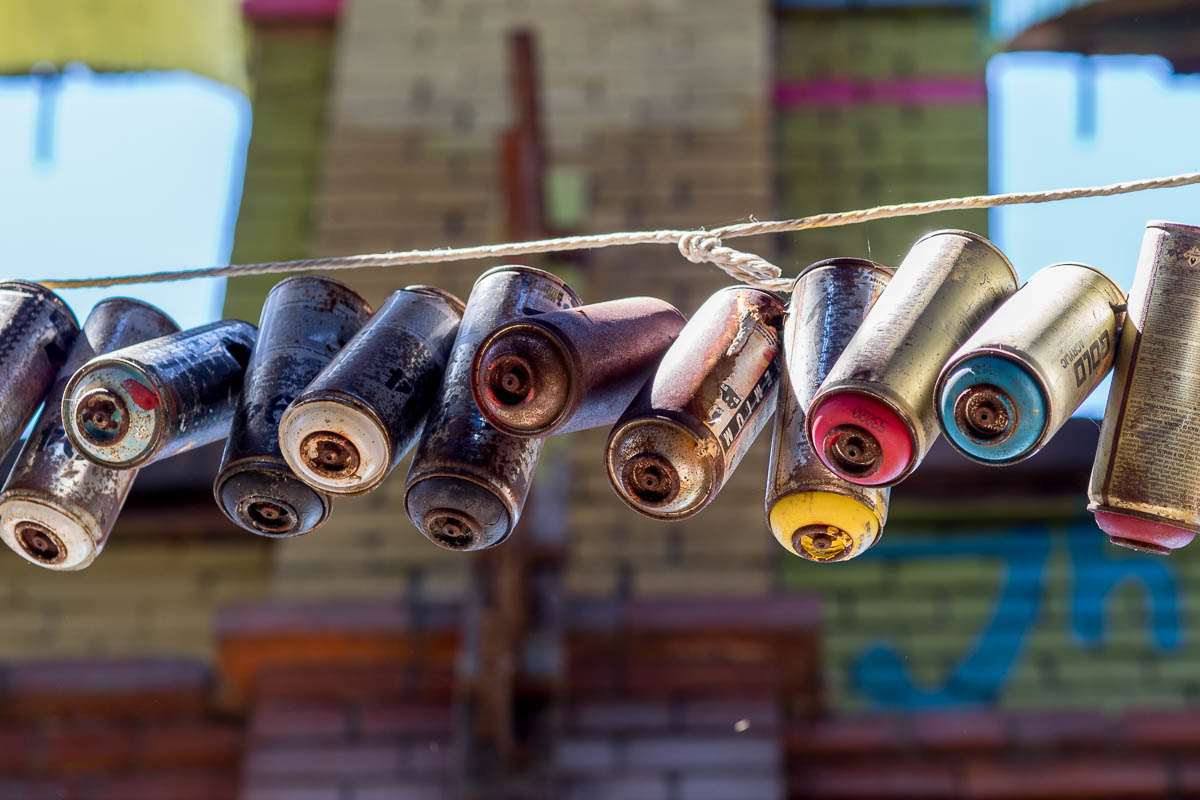
At Dosenkunst you will find extensive contributions to the much frequented spray spots in the Rhine-Main region such as the Ratswegkreisel in Frankfurt, the Lincoln Wall in Darmstadt or the legal walls in Bad Vilbel. You will receive extensive information about the artists who create these fantastic works and often how and why. This includes visits to legendary events such as the Meeting of Styles, the IBUG or Das Dreckige Dutzend (=The Dirty Dozen). A special section is dedicated to the artist duo Hera and Akut, who as Herakut have created many captivating murals in the surrounding area.

Not only was it time for an article about this great and ever-filling archive of urban art, in 2020 was also the 10th anniversary of Dosenkunst and now we had Jörg Rudolph as guest on a live broadcast on Radio X. The podcast is in German and in the following is an English translation of the interview. You can find the links to the mentioned places, artists or events at the bottom in the Infothek. All photos in this article are from Jörg Rudolph, Dosenkunst.
How long have you been doing this? When did this all start with Dosenkunst?
I started the website Dosenkunst in July 2010, because I already took quite a lot of photos and collected heaps of content. It used to be all sorts of photos while traveling around the globe at first. I started to focus the photographing of graffiti in 2000. My job is in the city of Wiesbaden and I am active there in the children and youth work. So of course you’re dealing with youth culture and graffiti and hip hop then. Since I like to take photos, I took a lot of pictures there about that thematic. Till then the photos were just stored in the archive on my hard drive. Later on, at some point, I thought the world and humanity should see them. That’s why I opened the website and built it up step by step.

I’ve always loved to follow your website. In the beginning there was the Mainstyle page, which has always delivered great graffiti art and at some point your page was added to the net and provided as well great stuff. You always bring the new artworks and you are often directly at the spots when they get created. So for example at the hot spot Ratswegkreisel or you also go regularly to festivals. And you have the camera always with you.
That’s right, I always have a camera with me. I now also take pictures with small cameras, which are of course high enough in quality. Because when it comes to graffiti and street art, there are always opportunities to record something. Because I’m more out of the photographic corner and I’m not stuck in the graffiti scene, like Mainstyle for example. I tend to pay attention to for me aesthetically beautiful elements and special details and I don’t photograph everything I see in the streets, but especially when it comes to high-quality creation happenings, I like to be there and photograph them.

If you’ve been taking photos since about the year 2000, that must be a lot of photos. Approximately how many photos can be seen at Dosenkunst?
On the website, I don’t know exactly how many photos are online, but I’ve now written about 1200 articles. Sometimes there are only three or four photos, which I then publish if it is a special work that I want to highlight. But now for example one of the past contributions of the Ratswegkreisel in Frankfurt, there are now pictures of half a year on it and there are more than 250 photos, which I summarized in a gallery. I always build up the post in such a way that I first show eight or nine pictures that are particularly important to me and that I find beautiful. Then all the others, which I have also photographed and also still want to show, come in the gallery below that in the article. Visitors can then click on these and enlarge them if they are interested. So there are certainly some tens of thousands of photos on the website.

You meant you photograph the things that you find aesthetically beautiful. So it’s not just graffiti and streetart you capture, you also have a lot of articles about Urbex and interesting art you encounter while you travel.
Yes, so one reason to build the site was also for showing the graffiti that you find in special places. For example in old and abandoned buildings. When I started my job in Wiesbaden, the “Wall Street Meeting” was still in the old Schlachthof (=Slaughterhouse). This is actually the birthplace this great event. After some years it has been renamed and today it’s called “Meeting of Styles”. At that time, the Schlachthof in Wiesbaden was still an old slaughterhouse, which was no longer used. There were festivities around it and the building was painted from the outside during the “Wall Street Meeting”. But it was also possible to enter the premises because it was open. There you could find again other interesting things, which some other artists have painted. The whole area was so wide that there were a lot of halls and broken cars, and just everything was painted. There was an old Opel car dealership where a lot of painting was done. Actually the entire walls. It was incredibly exciting to go in there and see what was there and then to photograph it and show it to others.

On the one hand, you have the website, but you also have a Facebook channel and another one on Instagram, where you regularly post photos and articles about graffiti. Is there a difference between the content of the platforms?
The blog, that’s actually my baby, where I publish everything important to me. The blog posts are then automatically added to Facebook. Instagram is a bit different because it’s just a picture. But there you can then specifically point to an artist or a work. It’s all running parallel. The Dosenkunst blog is subtitled “Graffiti in the Rhine-Main-Area” and I try to keep the content here from the region when I’m not traveling. On Instagram, I also post things from Berlin, Colombia, Vietnam or other places I’ve been to.

Let’s talk a bit more about the events and the jams. One thing is to look for spots and works of art when you’re wandering around and looking for photo motifs. But especially at the festivals and graffiti events it is very concentrated and concerted. There are at the same time at so many places fantastic things going on and it is something else again, when you report of a making of.
Yeah, that’s different. And that’s also something that excites me as a photographer and gives me another opportunity to find motifs there. So to look directly at the painters while they are doing the wall or to search for cut-outs or to find sketches. It is also nice to notice how such a work is created, how it is drawn, how it is painted and then finished over a period of one or two days. And then afterwards, when the scaffolding is gone, you can photograph the finished works, which then of course look wonderful and great. But if you know how the works were created and which painter painted there, then that’s much more interesting. I also always try to have a short conversation when I’m not interrupting. So with questions like, „Why are you painting that?“ or „What’s the background to it?“ and similar questions. That is again particularly exciting and then the simple painting becomes a complete story. That is really beautiful and as well what fascinates me the most.

I’ve always liked to follow your content over the years. There are plenty of other cool websites where you can see photos of artworks, murals and graffiti, but at Dosenkunst you could always find these making ofs and you’ve documented the whole creation of works beautifully. So from the bare wall to the additional parts to the finished work. And you always write about a look behind the scenes. Like about the question: How does such a fabulous artwork actually gets created?
That’s right So if it is possible for me and I get the info, then this creation date is even more important to me than photographing the finished things afterwards. The “Meeting of Styles” in Wiesbaden is one of the greatest graffiti jams ever and I’m actually always there two or three times a year. So not only at the end, when the scaffolding is gone, but also on Saturdays, which is the creation day, and then I walk past the walls several times and see how it all comes together. That’s really fascinating.

You’ve been doing this a long time. So ten years already. Is there a birthday or founding date when you opened Dosenkunst?
In July 2010, I wrote the first post. That was on 21st of July to be exact. I was looking there earlier, too. So the 10th jubilee was actually just some time ago.

Because you document so many jams and making-ofs, you surely get a lot of requests or information about events, don’t you? People are gonna know you’re doing this. So artists and others inform you and you’ll know where something new is happening then.
Yes, meanwhile I’m well connected and get a lot of information in advance. For example, the “Meeting of Styles” in Wiesbaden in 2020 had been, that was rather secret. There are usually many thousands of people who attend the event. There is usually a lot of music and good food, almost with a party character. This time there was a live stream and it took place without an audience. That’s why it was published at very short notice. But since I know the organizers, I was allowed to take photos as a event photographer. Afterwards I also sent the photos to the festival founder and organizer Manuel Gerullis, so we both got something out of it.

Tell me about your equipment. I also take many photos and have different cameras, I think you certainly have a whole assortment?
Yeah, I always used to take a lot of photos. I always travel with analogue and slide devices. Since 2000 I started to buy digital cameras and then I got stuck with Nikon at some point. It was a full-format camera at first, but it was so heavy that I left and changed it at some point. Now I’ve landed at the Micro Four Thirds of Olympus, which is a system camera. And I’m actually very satisfied with that. For special photo motives, for example, when I photograph at markets, I have another full-format camera with a 35 mm camera and not with autofocus, means with a manual lens. This is another story when it comes to photography. But otherwise I’m very happy with Olympus.

It’s often the case that you start with one product and when you’re happy with it, you build up your equipment around it from the brand’s range.
Yeah, that’s how it starts. But these days it almost doesn’t matter what camera you use or what technique you use to take photos. If you have an eye for it and know what you want to do with it, even a cell phone will do nowadays. The good mobile phones already have good lenses in them. You don’t get the depth of field, but you can definitely use it and get great photos.

However in some situations the artworks just push the limits of the camera. With the very huge or especially long works of art, the angle is often not wide enough and you don’t get everything. For example, at the Ratswegkreisel, the paths are often very narrow and then there is a work that goes over ten or twenty meters or more, which you can often simply just not get on one photo from close. Do you also use wide-angle lenses for that?
I use software for that. So I take several pictures and then assemble them on the computer to a big one. I used to have a time when I always built the photos of the walls completely together so that you could see the whole wall completely in a row. But there are so many details to see, even too much to get it all into your brain at once. I tend to be someone who focuses on details then. I photograph just the a single character or the face or just the eye or even just a drop running down. I think that’s actually nicer than the things that everyone else somehow photographs and that you can then find everywhere at other places and on other websites.


I always liked the way you present your content. You always have several photos, these close-ups of individual elements, but then also the complete picture of the piece. So that you can see how it looks as a whole. You then pick out focal points that you personally find interesting.
Yeah, right. So I also try to document that the people who are not in Frankfurt now, who can’t get to the wall, but that they can see what’s there. Also the normal motifs, but then I also pick out the motifs that I particularly like. This can be for example sometimes also only a face.

Let’s talk a little more about artists. On the social media platforms, so a lot on Facebook but at the moment even more on Instagram, there are an incredible amount of channels and people who post streetart and graffiti content, but I find there are only a few really good ones where the operators then also extensively research, link or tag the artists and also try to indicate who the creators behind it are. I’ve always admired the fact that you always list the artists very well and precisely. This is an important point.
That’s an important part of doing this. Because you’re showing a work that someone else made. Then they should also get their credits for it. And if you link the artist and use the corresponding hashtags, then the artist will also get a message that a picture of him has just been shown again. It also gives you the opportunity to a contact to the artist. This is a great option, especially on Instagram. With the website and the whole blogging world, you’re more connected with other photographers and it’s more about taking pictures. But in the art scene, you have to be on Instagram at the moment to network. And this may also lead you to hear from other photographers, where there is an interesting new urban painting, or you can also get feedback if I don’t know which artist it is about a work of art you posted. Then I add that in retina and then it’s perfect for me.

At Streetartcities this is pretty nice described in a graphic. There are three circles that intersect and form a common surface. One circle is the a symbol for the viewer, the next is the artist and creator, but the third circle is the “Streetart Hunter”. In other words, the photographer who offers access to people who can’t admire the artwork by staying in front of it. Then photographers like you make it accessible to a much larger audience and readership and so other people can see what’s happening there. These are important pieces of the puzzle.
Yeah, it’s good for the photographer who can show great artworks. Well, that would be me. But of course it’s also good for the artist, who then gets attention through my community and can also increase his reach. I think we all benefit from that.
What else is new, do you know about something coming up? You had also apologized in a previous post on your website that there was not much content lately, but there was not so much going on either. Unfortunately, many events have been cancelled. Do you know anything that’s coming up?
So the last jam I went to, that was from “Das Dreckige Dutzend” here in Frankfurt at the Schmickstraße. That was really awesome! AMBER has been organizing this for years and it is a nice and important event here for Frankfurt. Then there is the “Meeting of Styles” in Wiesbaden and in the region around, so in Darmstadt the “Lincoln Wall Meeting” and also an event in Gelnhausen, the “Lack & Lines”. The collaboration event from “Das Dreckige Dutzend” is very great and good as a city event. What is also good for Frankfurt, so at the Ratswegkreisel is currently four times a year, so in the spring, summer, autumn and winter, there a wall get painted each time. About 30, 40 or even 50 artists get together and paint the longest wall at the Ratswegkreisel. That spot is the largest legal graffiti wall that the city has released and where actually every weekend and every day there are paint actions and people are creating on the walls. But when 30 or 40 painters come together and think about a theme, then that’s something really special! The last wall, for example, was now completely painted in black. So with pre-defined colors, that looks great.

These creations are just masterpieces! Tell us some more about other interesting spots, which are here in Frankfurt and in the surrounding area. Also for people who don’t know their way around here and would like to see more.
So it’s fun for example to walk through the Bornheim district and just take a look around about what kind of streetart you can find and especially nice smaller pieces. So as well stuff like stencils and stickers. I also find this fascinating and exciting again and again. Apart from that, Bad Vilbel has become very important here in the Rhine-Main area in recent years. They have four legal areas, which can also be found on the website of the city of Bad Vilbel, where there are always new paintings and there is a lot from a very fantastic artist duo called HERAKUT, consisting of the artists HERA and AKUT, who painted a lot in Bad Vilbel. This wall by the railway embankment, it’s just amazing. There is currently construction and there has been a lot removed and polished. You can still see the pieces, but if you still want to see them, you have to be quick and go there for a visit.

You even have an own section on HERAKUT at your website Dosenkunst. They are super awesome and you are also a big fan of their work.
Yeah, they’ve always fascinated me. So this mixture of HERA with her light strokes, that is, she paints small things, but also entire house walls, very roughly sketched, and the art from AKUT, who then always puts in the photorealistic eye, so it together it just really fits together well. They paint all over the world now meanwhile. They’ve painted in the U. S. , they’ve painted in Asia, don’t know where to stop counting, they’ve painted just everywhere really great artworks. And since they come from this corner and have painted so much here, that’s already something nice for Frankfurt and the Rhine-Main area.

The works of art of the two are really amazing and go beyond the picture itself. So it’s always very empathetic and always with a message that makes you think. Almost every picture touches you in some way and often there are also deep sentences.
Yes, they are really great. Another great place which is important to mentioned, that is the Naxos Halle here in Frankfurt. It’s a large factory hall in which many different groups are active and different artistic directions are shown. There’s the Naxos Atelier upstairs on the first floor. It’s from the youth office. Young people from all over Frankfurt can paint there and there are open hours where you can just go to this studio and be creative.

Yes, a great place! But not only for young people, a creative refuge for everybody. They even have workshops for seniors. Graffiti and spray-cans workshops with elders and community work.
Yes, that’s right. In the front there is the Willy Praml Theater and in the backyard there are legal areas where you can paint, where I’m also visiting regularly and just have a look what’s going on. The “Friedensbrücke” (=Peace Bridge) is also a spray place, but this is not a legal wall where everyone can paint. This is a so-called project wall and you have to register there. I think it’s also organized by the Naxos Hall. Mostly some artists paint a great wall together at that place. There was also a work on the subject of “Renembering the attack of Hanau”, which was a very good and important work.
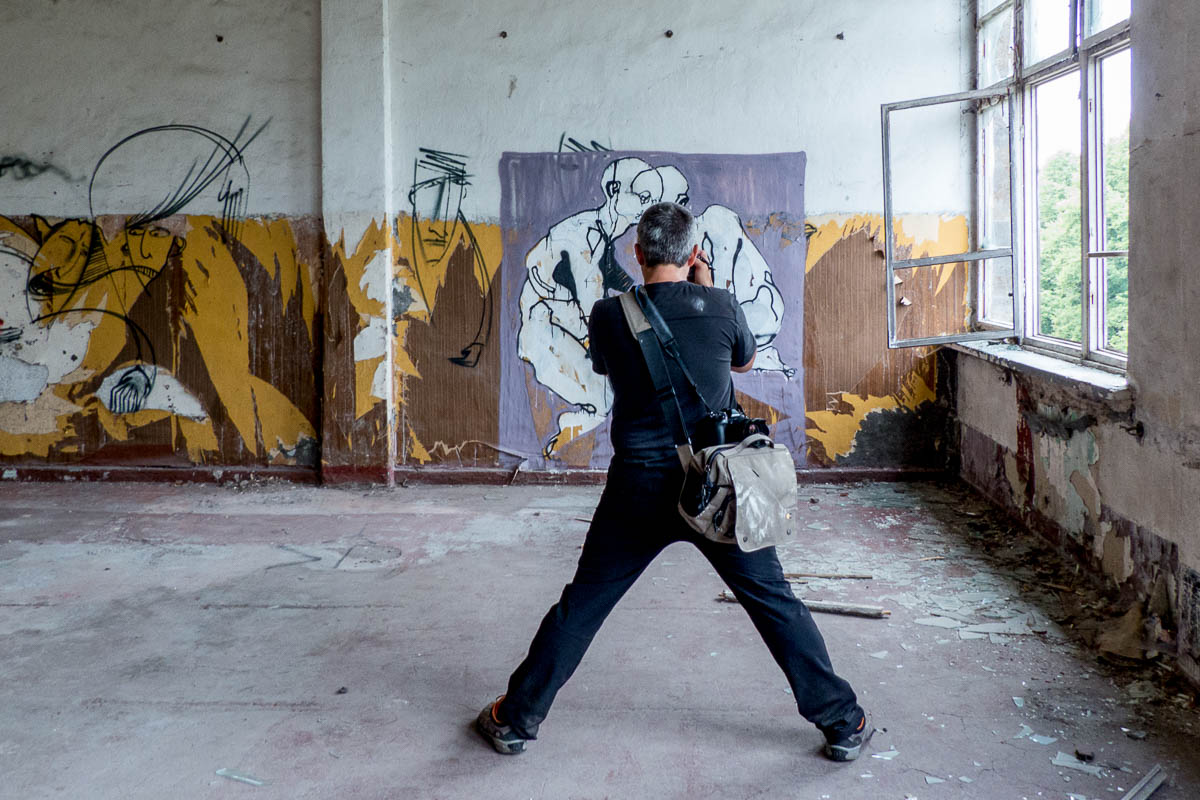
If you want to see more great photos and interesting articles about graffiti art from the Rhine-Main area and also from overseas, then definitely check out the website Dosenkunst.de!

INFOTHEK
Dosenkunst – Jörg Rudolph
![]() Website: https://dosenkunst.de
Website: https://dosenkunst.de
![]() Facebook: https://www.facebook.com/dosenkunst
Facebook: https://www.facebook.com/dosenkunst
![]() Instagram: https://www.instagram.com/dosenkunst
Instagram: https://www.instagram.com/dosenkunst
![]() Flickr: https://www.flickr.com/photos/dosenkunst/albums
Flickr: https://www.flickr.com/photos/dosenkunst/albums
![]() Twitter: https://twitter.com/dosenkunst
Twitter: https://twitter.com/dosenkunst
![]() Tumblr: https://dosenkunst.tumblr.com
Tumblr: https://dosenkunst.tumblr.com
Event: Meeting of Styles – former Wall Street Meeting
![]() Website: https://www.meetingofstyles.com
Website: https://www.meetingofstyles.com
![]() Facebook: https://www.facebook.com/MeetingOfStylesWorldwide
Facebook: https://www.facebook.com/MeetingOfStylesWorldwide
![]() Instagram: https://www.instagram.com/int_meetingofstyles
Instagram: https://www.instagram.com/int_meetingofstyles
![]() Twitter: https://twitter.com/meetingofstyles
Twitter: https://twitter.com/meetingofstyles
![]() Youtube: https://www.youtube.com/@InternationalMeetingOfStyles
Youtube: https://www.youtube.com/@InternationalMeetingOfStyles
Event: Das Dreckige Dutzend – The Dirty Dozen
![]() Website: http://www.dasdreckigedutzend.org
Website: http://www.dasdreckigedutzend.org
![]() Facebook: https://www.facebook.com/DDDStreetArt
Facebook: https://www.facebook.com/DDDStreetArt
![]() Instagram: https://www.instagram.com/dreckigesdutzend2017
Instagram: https://www.instagram.com/dreckigesdutzend2017
Event: Lack & Lines
![]() Website: https://www.farbkopf.com/lack-lines
Website: https://www.farbkopf.com/lack-lines
![]() Facebook: https://www.facebook.com/LackundLines
Facebook: https://www.facebook.com/LackundLines
Graffiti Place: Naxos Atelier – Frankfurt
![]() Organizers: Naxos-Bund e.V.
Organizers: Naxos-Bund e.V.
![]() Adress: Waldschmidtstraße 19 – 60316 Frankfurt am Main
Adress: Waldschmidtstraße 19 – 60316 Frankfurt am Main
![]() Website: http://jugendladen-bornheim.junetz.de
Website: http://jugendladen-bornheim.junetz.de
![]() Facebook: https://www.facebook.com/studioNAXOS
Facebook: https://www.facebook.com/studioNAXOS
![]() Instagram: https://www.instagram.com/naxos_atelier
Instagram: https://www.instagram.com/naxos_atelier
![]() Youtube: https://www.youtube.com/channel/UCNenlHkSUh3K8m14uFBNXsw
Youtube: https://www.youtube.com/channel/UCNenlHkSUh3K8m14uFBNXsw
Graffiti Place: Ratswegkreisel – Frankfurt
![]() Dosenkunst: https://dosenkunst.de/tag/ratswegkreisel
Dosenkunst: https://dosenkunst.de/tag/ratswegkreisel
Graffiti Place: Friedensbrücke – Frankfurt
![]() Dosenkunst: https://dosenkunst.de/?s=freiluftgalerie
Dosenkunst: https://dosenkunst.de/?s=freiluftgalerie
Graffiti Place: Lincoln Wall – Darmstadt
![]() Facebook: https://www.facebook.com/LincolnWallDarmstadt
Facebook: https://www.facebook.com/LincolnWallDarmstadt
Graffiti Place: Town Bad Vilbel
![]() Graffiti Bad Vilbel: http://www.graffiti-bad-vilbel.de/
Graffiti Bad Vilbel: http://www.graffiti-bad-vilbel.de/
![]() Spray Area: Nordbahnhof ( = Train Station North)
Spray Area: Nordbahnhof ( = Train Station North)
![]() Spray Area: Freibad ( = Swimming Pool)
Spray Area: Freibad ( = Swimming Pool)
![]() Spray Area: Schallschutzwand ( = Noise barrier wall)
Spray Area: Schallschutzwand ( = Noise barrier wall)
Graffiti Place: Town Dortelweil
![]() Spray Area: B3 Unterführung ( = Speedway B3 Underpass )
Spray Area: B3 Unterführung ( = Speedway B3 Underpass )
![]() Spray Area: Schallschutzwand ( = Noise barrier wall)
Spray Area: Schallschutzwand ( = Noise barrier wall)
![]() Photo Credits: Jörg Rudolph – Dosenkunst
Photo Credits: Jörg Rudolph – Dosenkunst





